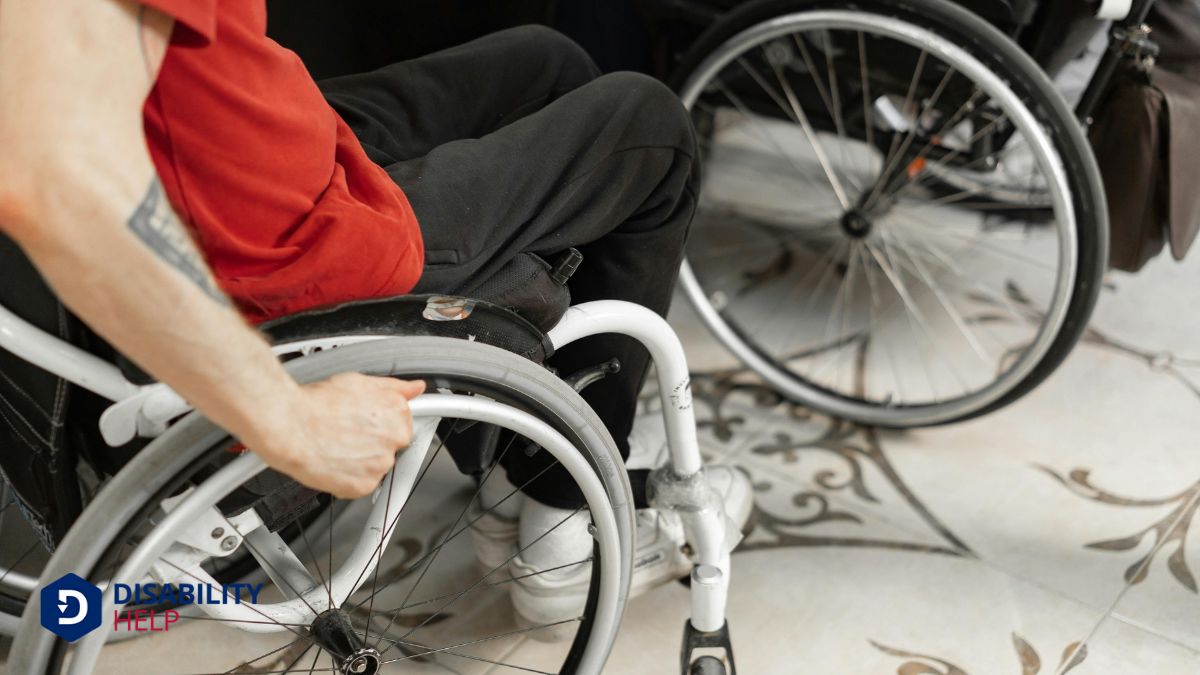To obtain permanent 100% VA disability, we need to prove a service-connected condition that makes gainful employment impossible and is stable with little chance of improvement. It's essential to gather detailed and up-to-date medical documentation, including records, treatment history, expert opinions, and personal narratives. We must verify accurate and organized paperwork while understanding VA's disability rating criteria. Consistent communication with the VA and potentially seeking help from professionals like Veterans Service Officers can greatly enhance our case. By thoroughly addressing these areas, we can significantly enhance our chances of success. Let's explore further to tackle each step effectively.
Key Takeaways
- Obtain comprehensive medical documentation demonstrating the severity and stability of your service-connected condition.
- Ensure consistent and thorough treatment records showing regular attendance at medical appointments.
- Gather expert medical opinions from specialists linking your disability to military service.
- Familiarize yourself with VA eligibility criteria and submit all necessary documentation accurately.
- Seek professional assistance from Veterans Service Officers or attorneys for guidance and representation.
Understanding VA Disability Ratings
When it comes to understanding VA disability ratings, the process can seem a bit overwhelming at first. It can be a lot of information to sift through, but let's break it down together.
The VA assigns disability ratings in 10% increments, from 0% to 100%, based on the severity of a veteran's service-connected condition. These ratings directly impact the amount of compensation received. The higher the percentage, the greater the monthly benefit.
One might wonder how these percentages are determined. The VA uses a schedule of ratings, which evaluates how much a condition impairs our ability to work and function in daily life. Each condition has specific criteria that guide the rating process.
It's crucial to remember that multiple conditions can be rated, and the VA uses a method called "combined ratings" to calculate the overall disability percentage.
Eligibility Criteria Overview

Understanding VA disability ratings sets the foundation for grasping the eligibility criteria for permanent 100% VA disability. As we navigate this process, knowing that achieving a 100% disability rating implies we're acknowledged as having a total inability to maintain any gainful employment due to our service-connected disabilities is vital. This level of rating indicates that our condition severely impacts daily living and occupational capabilities.
To qualify for permanent 100% VA disability, our condition must be stable and unlikely to improve over time. The VA seeks evidence of a lasting impact, indicating our disability isn't anticipated to change. We'll need to demonstrate that our health situation is severe and long-term. It's crucial to make certain that every aspect of our condition is documented and clearly communicated.
Moreover, specific conditions, like certain cancers or ALS, automatically qualify us for a 100% rating. For others, we may need to combine multiple disabilities to meet the 100% threshold. Understanding these criteria helps us move forward confidently, making sure we're on the right path to securing the benefits we deserve. Through clear documentation and persistence, we can attain the right support for our needs.
Gathering Essential Medical Evidence
When aiming for a permanent 100% VA disability rating, gathering essential medical evidence is vital. We need detailed medical documentation and consistent treatment records to build a compelling case.
Let's also make sure we include expert medical opinions to strengthen our claim.
Comprehensive Medical Documentation
Obtaining 100% VA disability benefits depends largely on the quality of the medical documentation we present. It's essential that we gather thorough medical evidence reflecting the true extent of our conditions. This isn't just a collection of medical records; it's a detailed narrative of our health journey and its impact on our daily lives. We should make sure that our documentation is detailed and clearly demonstrates the severity and persistence of our disabilities.
First, we need to obtain all relevant medical records from every healthcare provider we've visited. This includes hospitals, clinics, and specialists. Every diagnosis, treatment plan, and prognosis should be included. Detailed notes from physicians that describe how our conditions affect our ability to work or perform daily activities are crucial.
Additionally, we should consider securing statements from medical professionals who can attest to our conditions over time. These statements should highlight the chronic nature of our disabilities and any progression observed.
Personal statements from family or friends who witness the daily impact of our disabilities can further strengthen our case. By providing a complete view through detailed documentation, we increase our chances of securing the benefits we deserve.
Consistent Treatment Records
To consistently build a strong case for VA disability benefits, we must make sure our treatment records are thorough and up-to-date. By keeping detailed records, we show the VA the ongoing impact of our disabilities. It's crucial to attend all medical appointments regularly and document every visit. Each appointment adds valuable information to our file and helps the VA see the full extent of our condition.
Let's focus on obtaining copies of all medical records, including notes from doctors and results from any tests. We need to verify that these documents accurately reflect our symptoms, treatments, and any changes in our condition. If we notice any inconsistencies, addressing them promptly is vital.
Additionally, organizing these records chronologically makes it easier to track our medical history over time.
Moreover, we should maintain a personal log of our symptoms and their effects on daily life. This log can include pain levels, physical limitations, and emotional challenges. Such personal accounts can provide a deeper understanding of how our disability affects us beyond what's in medical charts. By combining professional records with personal notes, we build a compelling case for the VA to review.
Expert Medical Opinions

In addition to maintaining consistent treatment records, seeking expert medical opinions can greatly strengthen our case for securing 100% VA disability. Expert opinions provide an authoritative perspective on our medical conditions and their impact on daily life. These professionals offer detailed insights that go beyond regular medical records, helping us present a complete picture of our health challenges.
First, we should identify specialists who can accurately assess our specific conditions. Neurologists, psychologists, or orthopedic surgeons might be necessary, depending on our needs. Their evaluations can highlight the severity and progression of our disabilities, offering essential context for the VA's assessment.
Next, we should ensure these experts provide thorough reports. It's crucial to communicate the importance of detailed descriptions of symptoms, limitations, and how our conditions affect our ability to work or perform daily activities.
These reports should align with VA standards, clearly linking our disabilities to our service.
Applying for Disability Rating
As we begin the application process for our disability rating, it's essential to first comprehend the eligibility criteria.
We'll need to collect all necessary documentation to support our claim and make sure nothing is overlooked.
Understanding Eligibility Criteria
Why is understanding eligibility criteria significant when applying for a VA disability rating? It's essential because it helps us determine if we meet the necessary requirements before we begin the application process. Knowing what's expected can save us time and prevent the frustration of incomplete applications. The criteria ensure that we're pursuing the right path for our specific circumstances, maximizing our chances of achieving a successful outcome.
First, we need to confirm our veteran status. This typically involves verifying our service in the active military, naval, or air service and showing that we were discharged under conditions other than dishonorable.
Next, we must provide evidence of a current disability that directly connects to our service. Understanding the connection between our service and the disability is crucial, as the VA requires this link to grant benefits.
Moreover, we must be aware of the degree of disability, which is measured in percentages. A higher percentage indicates a more severe disability and can affect the benefits we receive. Familiarizing ourselves with these criteria allows us to evaluate our situation accurately and approach the application process with confidence and preparedness.
Gathering Essential Documentation
When applying for a VA disability rating, gathering the necessary documentation is an essential step that can greatly influence the outcome. We've got to make sure we collect the right papers to present a thorough case. Our first task is obtaining our military service records. These documents confirm our service history and any events that might've caused or worsened our condition. We must be meticulous here, as any discrepancies can lead to delays or denial.
Next, we should gather all medical records related to our condition. These include both military and civilian medical records. It's vital we request copies of any treatments, diagnoses, or evaluations from healthcare providers. Let's not overlook any private treatment we've undergone. Every piece of evidence counts.
We also need to prepare personal statements detailing how our disability impacts our daily life. Including statements from family, friends, or colleagues can add depth to our claims. Their perspectives provide additional insights into the challenges we face.
Navigating the Appeals Process

Starting the appeals process for a VA disability claim can feel overwhelming, but understanding the steps involved helps us navigate it more effectively.
First, if our initial claim is denied or we disagree with the rating decision, we have the option to appeal. The process typically begins with filing a Notice of Disagreement (NOD) within one year of the decision. It's important that we clearly state why we disagree and provide any new evidence that supports our case.
Once the NOD is submitted, we can choose between two review options: requesting a Higher-Level Review or submitting a Supplemental Claim. The Higher-Level Review involves a senior reviewer reassessing our claim without considering new evidence, while a Supplemental Claim allows us to present fresh evidence.
If we're still unsatisfied, we can appeal to the Board of Veterans' Appeals. This involves a more formal process, including the potential for a hearing.
Throughout this journey, attention to detail is key. We must make sure all paperwork is accurate and deadlines are met. With patience and persistence, we can effectively navigate this process and work towards obtaining the benefits we deserve.
Tips for Effective Communication
Effective communication is significant as we navigate the VA disability appeals process. It helps make certain our concerns are heard and understood. To start, we should be clear and concise in our communication. When writing to the VA, let's focus on providing facts that are directly relevant to our case. Avoiding unnecessary details can make it simpler for the VA to process our claims efficiently.
Listening actively during conversations with VA representatives is pivotal. By paying close attention to what they're saying, we can ask clarifying questions if needed and better understand their instructions or feedback. This helps avoid misunderstandings and guarantees we're on the same page.
Another tip is to document every interaction with the VA. Keeping a detailed record of phone calls, emails, and meetings, including dates, times, and names of people we spoke with, can be invaluable if we need to refer back to previous discussions.
Lastly, let's be patient and polite. The VA system can be overwhelming and frustrating, but maintaining a respectful tone increases the likelihood of positive interactions. By practicing these tips, we can enhance our communication skills and improve our chances of a successful outcome.
Seeking Professional Assistance
Recognizing the intricacies of the VA disability claims process, seeking professional assistance can be a pivotal step toward securing a favorable outcome. Navigating the elaborate requirements and potential pitfalls can be overwhelming, and that's where experienced professionals come in. They can guide us through paperwork, help us understand the evidence needed, and guarantee we meet deadlines, all of which are essential for building a strong case.
By enlisting the help of a Veterans Service Officer (VSO), attorney, or claims agent, we tap into a wealth of knowledge and experience. These professionals are familiar with the VA's system and can offer insights that we mightn't consider on our own. They can also represent us during hearings, advocating for our best interests and increasing our chances of receiving a permanent 100% disability rating.
Working with experts doesn't just mean handing over our case and stepping back. We need to maintain open communication, provide necessary documentation promptly, and stay engaged in the process. This collaboration ensures that our claim is as thorough and compelling as possible, ultimately making the journey less challenging and more manageable.
Together, we can tackle the obstacles and work toward achieving the benefits we deserve.
Conclusion
In our journey to achieve a permanent 100% VA disability rating, we've explored the critical steps together. We've understood the VA disability ratings, reviewed the eligibility criteria, and recognized the importance of gathering essential medical evidence. Applying for a disability rating can be challenging, but with persistence and a clear understanding of the appeals process, it's achievable. Let's remember that effective communication and seeking professional assistance are key to maneuvering this complex system. We're in this together.
The post How Do I Get Permanent 100% VA Disability? appeared first on Resources on Disability Assistance: Your Rights and Benefits.
source https://www.disabilityhelp.org/how-do-i-get-permanent-100-va-disability/
No comments:
Post a Comment